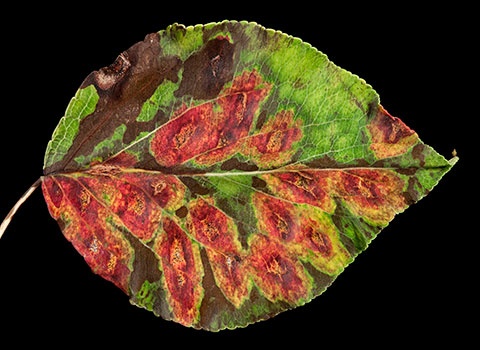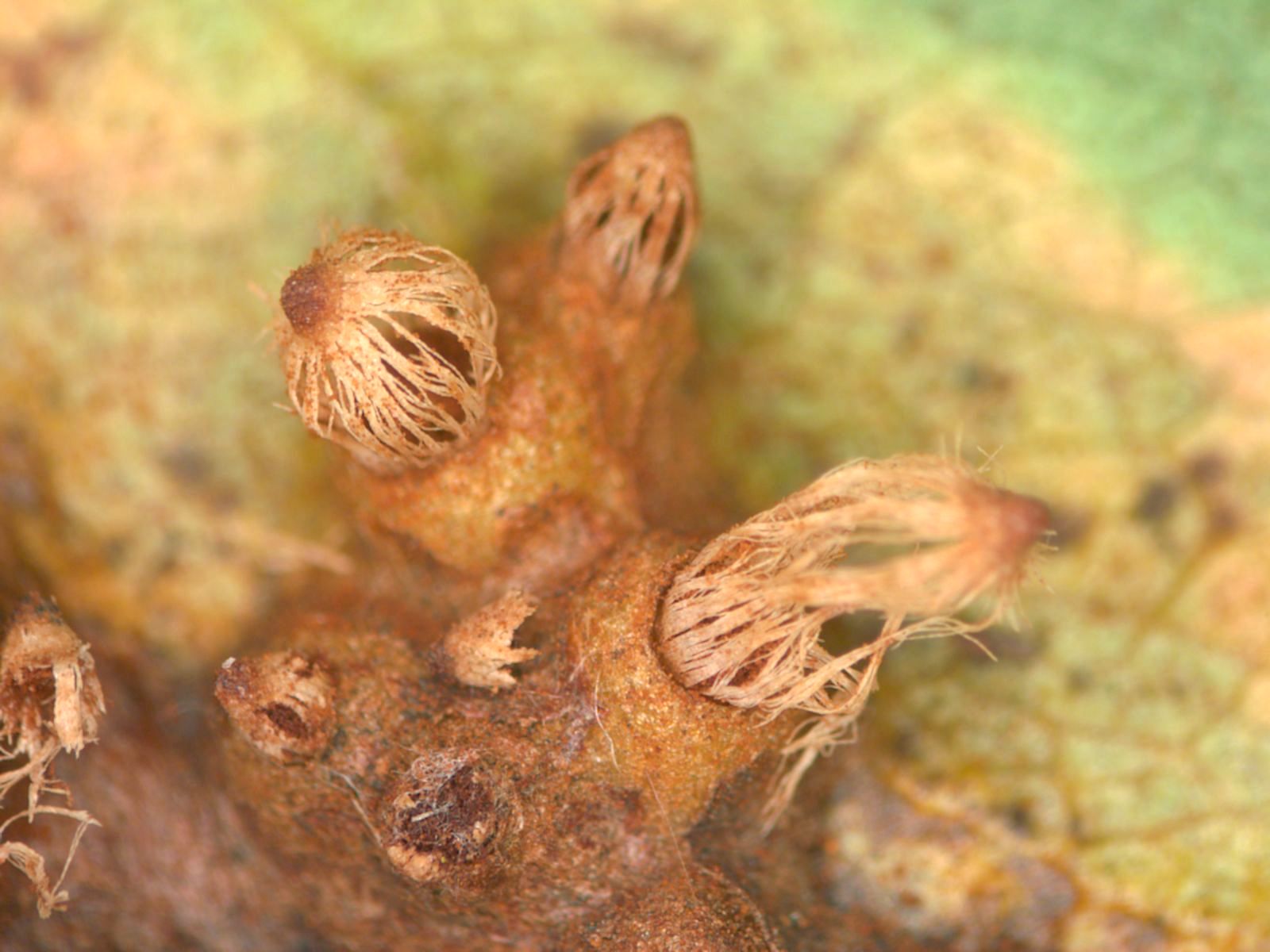By Joan Allen
Pear trellis rust is a new disease of pear and juniper in Connecticut this season. The fungus that causes pear trellis rust is Gymnosporangium sabinae. It requires two unrelated host plants, pear and juniper, to complete its life cycle. This disease is common in Europe and has been present for some time in parts of Canada including British Columbia and Ontario. In the United States, it was reported in California and Washington by 1997 and in Michigan in 2009. Symptoms of pear trellis rust were observed on pear in southeastern New York from 2009 to 2011. It was confirmed to be pear trellis rust in 2011. Pear trellis rust was identified in Fairfield County, Connecticut in 2012.

Both ornamental pear (Pyrus calleryana) and edible fruit pear (Pyrus communis) are susceptible. Pear trees sustain more damage and have much more obvious symptoms than the junipers. In the spring, spores are produced in orange gelatinous masses on galls on the juniper host. These spores infect newly expanding pear leaves. Young fruit and twigs can also be infected.
Symptoms on pear begin as yellow to orange spots on the leaves. Spots may enlarge and become bright orange-red during the summer. By midsummer, tiny black pimple-like dots will appear in the center of the spots on the upper surface of the leaf. In late summer, brown blister-like swellings will appear on the lower leaf surface just below these. Acorn-shaped fruiting bodies called aecia arise from these swellings. The sides of the aecia split open forming a trellis-like structure that gives this disease its common name. Spores (aeciospores) from the aecia are released until leaf drop and cause new infections on susceptible junipers. Juniper twig infections result in small, spindle-shaped galls that often cause little damage to the juniper. Galls produce gelatinous masses of spores each spring for several years beginning the second spring after infection and these spores infect pear, completing the life cycle.

The most effect management tool for pear trellis rust is to avoid growing pear and susceptible juniper near each other. References suggest a spacing ranging from 100 feet to 1000 feet. The greater the space, the fewer spores will reach the alternate host, reducing severity of disease. In the landscape, if juniper will be added where there are existing pear trees, choose a resistant juniper species. Those that are resistant include Juniperus squamata, J. horizontalis and J. communis.
In addition to plant spacing, infected plant parts can be removed before spores are produced that will spread to the alternate host. To protect pear trees, juniper galls should be pruned out before April 1st. To prevent or reduce infection of juniper, remove infected leaves, fruit and twigs from pear by mid August. This will be impractical on a large or heavily infected tree. Severely infected pear trees may develop galls at the base of twigs that can serve as an additional overwintering site for the fungus and these should be pruned out. Fungicides are not specifically labeled for this disease. Those labeled for rust diseases in general on pear or fruit trees may offer some protection. When using pesticides, always read and follow the label instructions carefully.